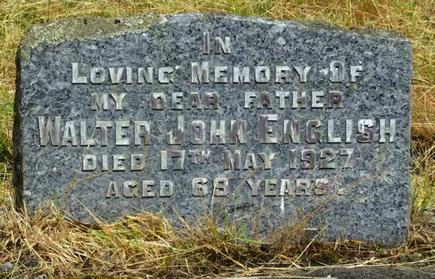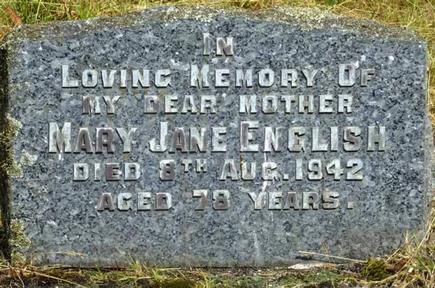
Looking Back
By Leo Billington
Local history – it’s marvellous what’s uncovered - number 2
In this second series of “It’s marvellous what is uncovered” in our local history, a focus is on the Grand Ridge Road.
The Google machine describes “Gippsland’s Grand Ridge Road as one of the great tourist drives of Victoria. For 132km it snakes its way along the ridge of the Strzelecki Ranges, providing striking views across the emerald-green farmlands to the Latrobe Valley in the north and Bass Strait in the south.”
The Grand Ridge Road can be reached via Warragul, Morwell or Traralgon from the Princes Freeway, or via Yarram, Foster, Korumburra or Leongatha from the South Gippsland Highway.
“The Grand Ridge Road spans 132km along the ridge of the Strzelecki Ranges. 50% of the roads surface is bitumen, 50% is gravel. The road is regularly maintained but care should be taken, especially during winter months when tree debris may fall on roads and surfaces can be slippery or corrugated. The road runs through a high rainfall area and is often wet, slippery and foggy. On a very rare occasion you could also experience snow.
It is suggested that you allow 5-6 hours to complete the drive comfortably. Shorter sections can be completed, however, by using Mirboo North as a convenient halfway point.”
A few corrections need to be made - striking views in any direction are possible if one climbs trees hunched together in far reaching softwood plantations. Anyway, if a driver is suddenly distracted by an occasional, faint glimpse of either Bass Strait or the Latrobe Valley, road safety is imperative.
Careful driving on this road is mandatory; and at least the section from Tarra Valley to English’s Corner has not seen any road maintenance for years. The road’s current condition is testimony to superior road making skills from decades ago. It’s a stretch to write “regularly maintained.”
Nonetheless, the Google machine does hit a salient point - “ Logging trucks also utilize parts of the road (primarily on weekdays) and caution is required. Sign damage may be a problem along the road, so it is important to carry a map and follow it carefully.” How true.
Let’s put all of the above aside. With a tank-full of petrol, it is a joy to navigate parts of this majestic road, once touted as Gippsland’s premier tourist drive. A destination not to be missed.
There is a tonne of history along the way - if one knows where to look. There is an unfortunate paucity of signage.
For instance, there’s English’s Corner. A sign post proves an invaluable intersection where the Grand Ridge road heads in one direction and the Boolarra - Yarram Road goes the other; or is it the Budgeree Road. It could even be the Morwell - Yarram Road. Best read your map or GPS at English’s Corner.
Named after Margaret and Walter English who initially began to carve out their dairy farm in about 1898, the Corner shows no reference to their tough life on their block. Here, dairying was really the only source of revenue. It was their practice to make butter on the farm and send it out by packhorse. Placed in a box holding 56 pounds of butter, and to balance the weight on the other side of their horse, was slung a bag of earth. Then to Boolarra.

Apparently, Walter arrived on his block ten years prior to marrying Margaret who was from Daylesford. About 30 acres had been cleared by this time - and eventually nearly half of the 320 acre block had been cleared when fires raced across their humble farm taking out a house, sheds and fencing.
In 1906 and 1907, destructive and widespread fires were reported across parts of Gippsland including Gunyah, Yarram, Toora, Welshpool and around Foster, wiping out many early settlers.
Margaret later commented that perhaps if a greater area had been cleared, they may have been spared. However, with spirit and determination, a new farm grew from their old farm. Sheep were raised and cleared areas were top dressed.
Before Walter’s passing in May 1927, they relocated to Hazelwood Estate.

At 78 years, Margaret passed away in August 1942 following her admittance to St Hilary’s Hospital in Morwell.
Her obituary published in the Morwell Advertiser August 13, 1942, remembered Margaret as a person of amazing and outstanding courage, with plenty of perseverance, who with her friendly disposition, was noted for outstanding hospitality. Every resident far and wide would recall some act of kindness or help, and much of a very practical nature when called upon.
In its’ October 24, 1940 edition, the Morwell Advertiser said to its readers that ‘It is no stretch of imagination, as some may think, to say that Morwell is destined to become "The Capital of Gippsland." There is an old and true saying that "You can't keep a good man down," and when there is a community of good men with rare potentialities in their midst to assist them, progress and advancement is a natural outcome and a foregone conclusion. Under certain conditions you cannot stop advancement any more than you can sweep back the sea.’
Forty years prior, Walter English was the “good man that couldn’t be kept down.” Margaret was part of the partnership as well. Throughout the dense and steep and unforgiving countryside bordering today’s Grand Ridge Road, other wannabe farmers tested their fortitude, largely without sustained success. Sustained advancement was defeated.
In the October edition of the Churchill & District News, the origin of College Creek will be uncovered. There is an intriguing back story to be told.


